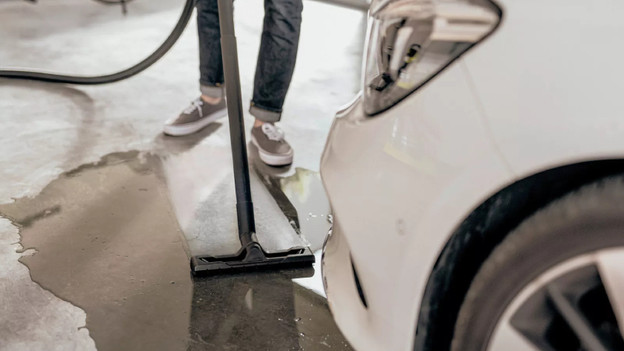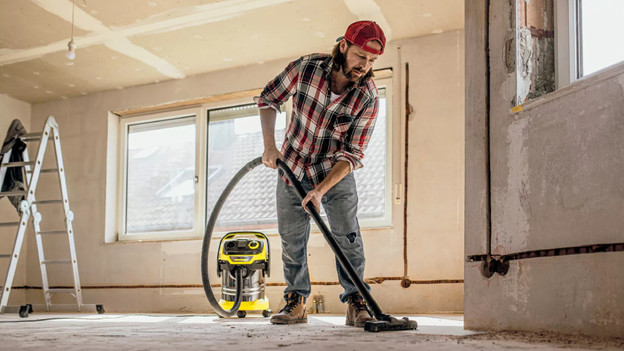
Written by Nathalie
Edited on
19 April 2024
·
15:45
What can you use a construction vacuum for?
Whatever tool you use, dust, sawdust, or grit will be released. You can clean this up quickly with a construction vacuum or wet/dry vacuum. Unlike a regular vacuum, you can also vacuum coarse materials and can even absorb liquids. In this article, we'll tell you what else you can use a construction vacuum for.

Choose a construction vacuum
Which construction vacuum you need depends on these questions:
- Do you need it for DIY jobs or professional jobs?
- Do you need a wet/dry vacuum or a construction vacuum?
- Do you want to vacuum liquids?
- What type of waste do you want to vacuum?
The differences

DIY jobs
For DIYers, a basic construction vacuum is good enough. Make sure to choose a model with a large enough capacity, so it won't become full during the job. With over 30L capacity, you can work for a longer time continuously. Some vacuums also have a built-in socket so you can connect your tools. In short, a construction vacuum for DIYers is large and powerful enough to vacuum both dry and wet construction waste. But, it doesn't have as many extra functions as a professional construction vacuum.

Professional jobs
If you want to use a construction vacuum for professional jobs, different properties are interesting for you. The dust level, for example. There are 3 levels: L (low), M (medium), and H (high). With a high dust level, you can even vacuum fine dust. As a result, you can get started without health risks. The built-in socket with an automatic start/stop system is also very useful for a professional. This means that the connected tool automatically turns on or off when you use it. Choose (semi) automatic filter cleaning, so the filter remains clean and the construction vacuum doesn't lose suction power.

Wet/dry vacuum or construction vacuum?
The term wet/dry vacuum is widely used for the DIY version of the construction vacuum. You can vacuum both wet and dry dirt that's too coarse for regular vacuums. As the name suggests, construction vacuums are used at the construction site or workshop. These are heavier and more specialized products than wet/dry vacuums for the occasional handyman.

Vacuuming liquids
Most construction vacuums can vacuum water, mud, or other wet dirt. That's useful, because it takes longer to clean with a mop and a bucket. You can use these water vacuums or wet/dry vacuums to empty the gutter, clean up old pieces of wallpaper, or as a cleaning aid in case of a leak. When you vacuum wet dirt, you don't use a vacuum cleaner bag. The boiler collects the wet dirt and water. The motor often stops when the reservoir fills up, so you know exactly when it's time to empty the boiler.

Vacuuming waste
Do you want to vacuum dry dirt? Use a construction vacuum with a vacuum cleaner bag. The vacuum cleaner bag collects both fine and coarse dirt. Does the construction vacuum lose power? It's probably time to replace the vacuum cleaner bag. You can easily throw a full vacuum cleaner bag away and replace it with a new one. Some construction vacuums include a couple of vacuum cleaner bags, so you'll have a supply. Thanks to this, you can continue the job for longer.
Article by Nathalie
Construction Vacuum Expert.
